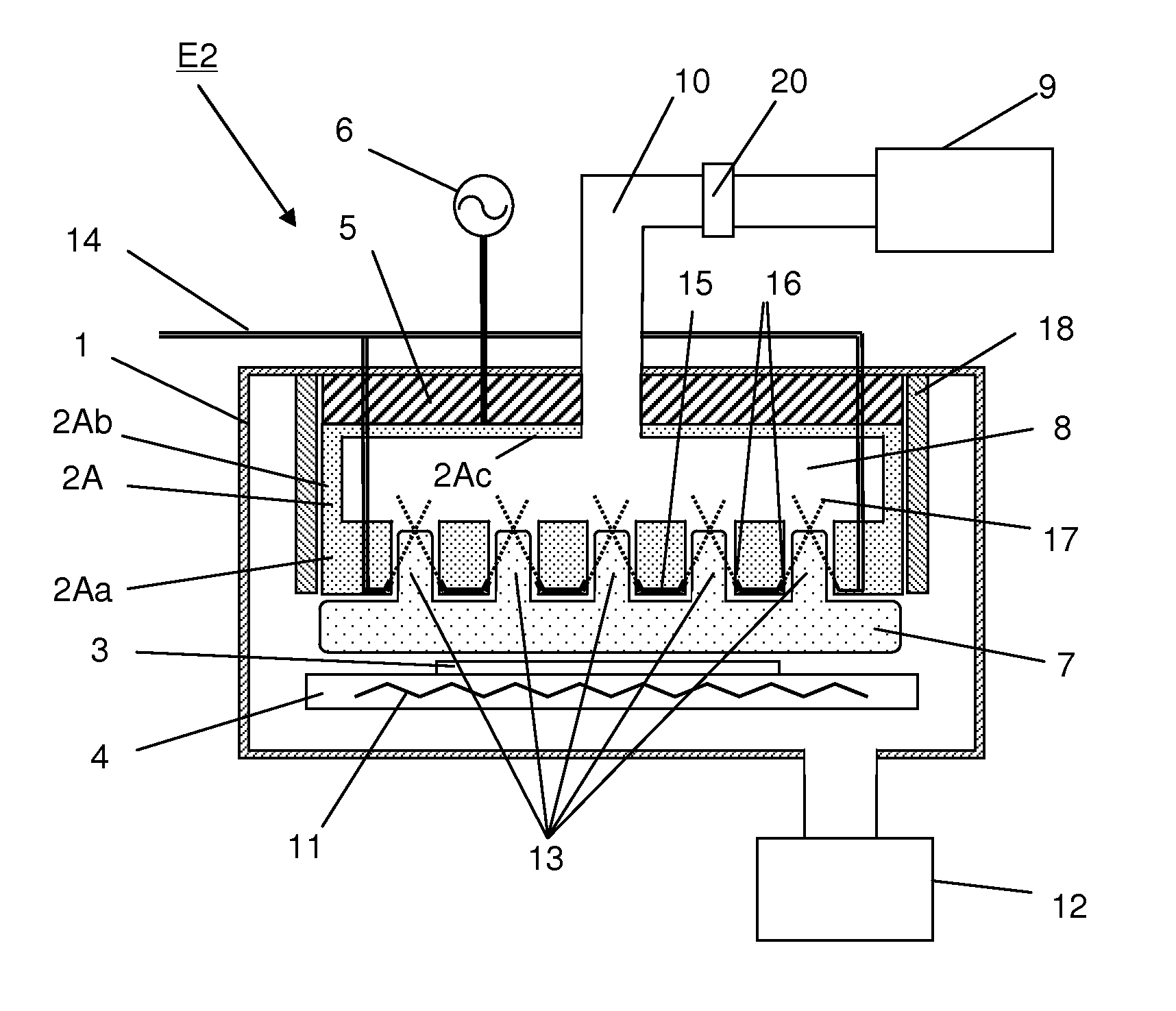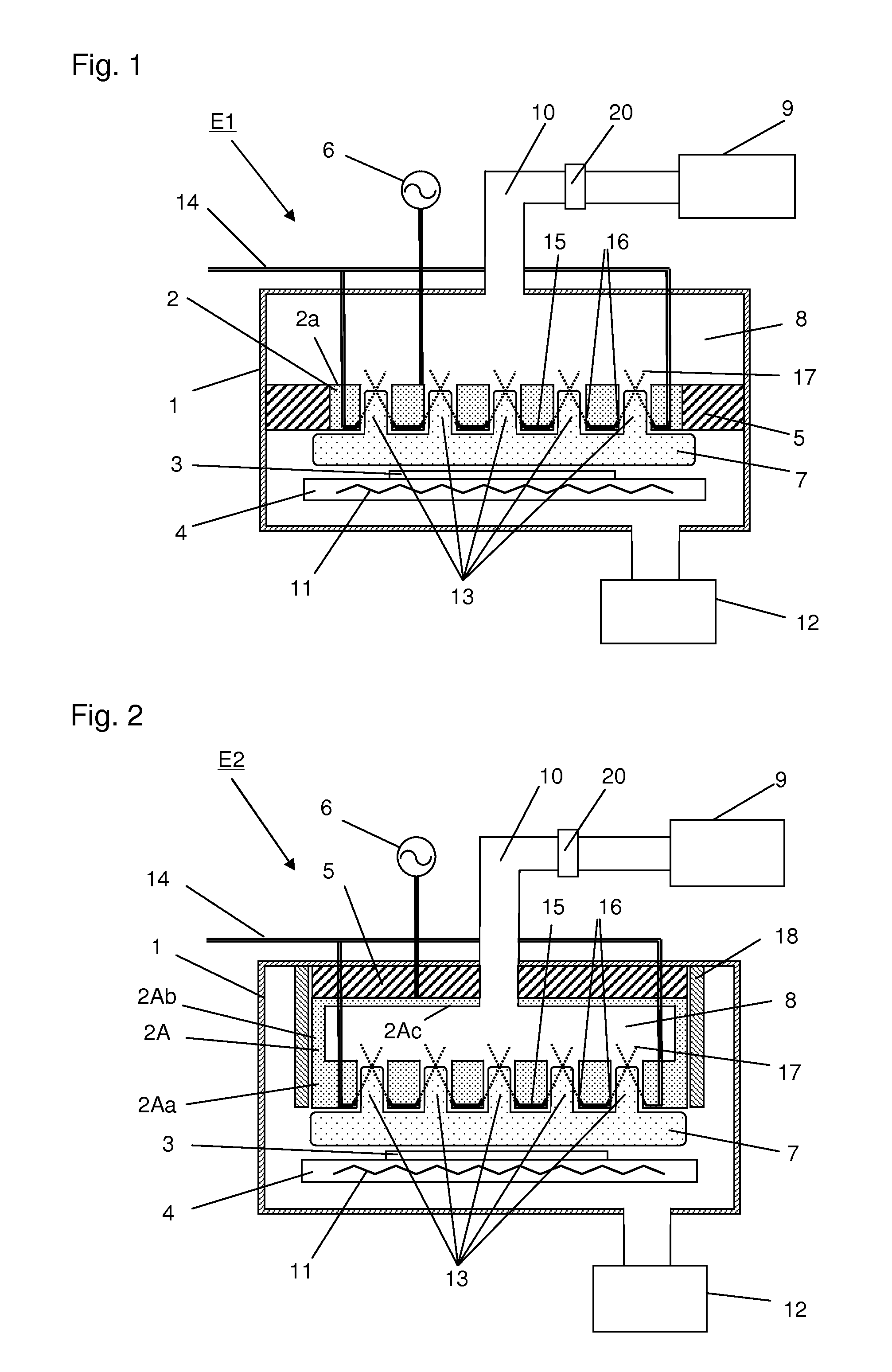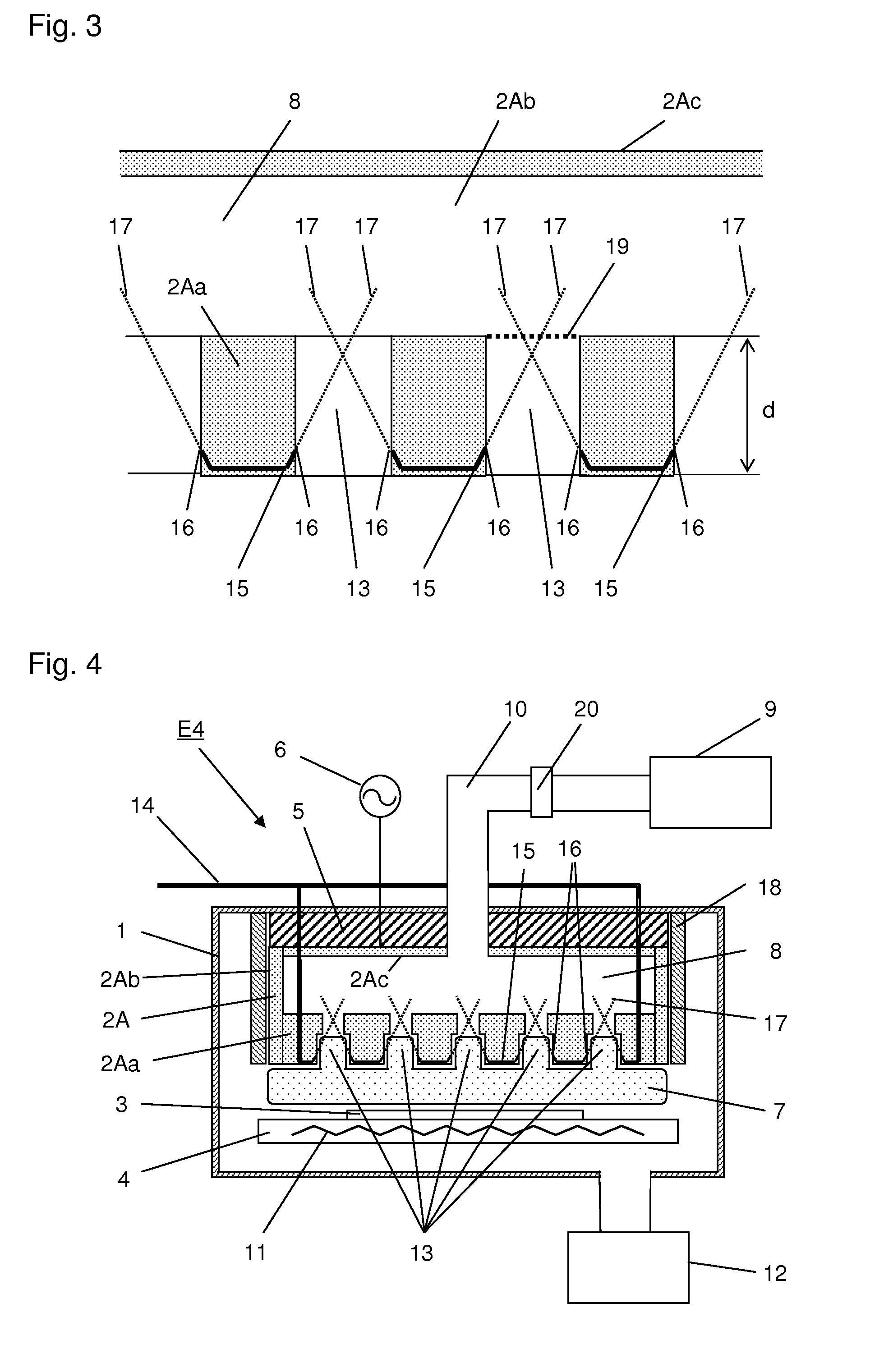Plasma processing apparatus and method of producing amorphous silicon thin film using same
a technology of plasma processing and amorphous silicon thin film, which is applied in the direction of sustainable manufacturing/processing, final product manufacturing, coatings, etc., can solve the problems that the exhaust and the disclosed gas suction hole cannot be considered to be able to sufficiently exhibit the capability, etc., to achieve efficient removal of unwanted materials, reduce the effect of structural defects and few defects
- Summary
- Abstract
- Description
- Claims
- Application Information
AI Technical Summary
Benefits of technology
Problems solved by technology
Method used
Image
Examples
example 1
[0113]The plasma processing apparatus E4 shown in FIGS. 4 and 5 was used to form an amorphous silicon thin-film on a substrate on the basis of the abovementioned first embodiment for forming an amorphous silicon thin-film, and the Si—H2 bond concentration of the formed thin-film was obtained. The quality of the formed thin-film was evaluated on the basis of the concentration.
[0114]As the substrate 3, monocrystalline silicon was used. The substrate 3 was set on the substrate holding mechanism 4, and the substrate heating mechanism 11 was used to heat the substrate 3 to a temperature of 220° C. The auxiliary gas exhaust device 12 was used to exhaust the gas in the vacuum vessel 1 till the pressure in the vacuum vessel 1 became 1×10−4 Pa or less, and subsequently the operation of exhausting the gas in the vacuum vessel 1 was switched from the auxiliary gas exhaust device 12 to the gas exhaust device 9. As the source gas, 300 sccm of silane gas was introduced from the gas introduction p...
example 2
[0121]An amorphous silicon thin-film was formed on a substrate using the plasma processing apparatus E6 shown in FIGS. 6 and 7 on the basis of the abovementioned second embodiment for forming an amorphous silicon thin-film, according to the same procedure as that in Example 1. The Si—H2 bond concentration of the formed amorphous silicon thin-film was calculated on the basis of the same method as that of Example 1. As a result, the Si—H2 bond concentration of the formed amorphous silicon thin-film was 0.6%, and it was confirmed that the amorphous silicon thin-film was low in the defect density thereof.
example 3
[0122]An amorphous silicon thin-film was formed on a substrate according to the same procedure as that of Example 1, except that the plasma processing apparatus E8 shown in FIGS. 8 and 9 was used on the basis of the abovementioned third embodiment for forming an amorphous silicon thin-film, and that power of 80 W was supplied to the plasma generating electrode 2A. The Si—H2 bond concentration of the formed amorphous silicon thin-film was calculated on the basis of the same method as that of Example 1. As a result, the Si—H2 bond concentration of the formed amorphous silicon thin-film was 0.3%, and it was confirmed that the formed amorphous silicon thin-film was low in the defect density thereof.
PUM
| Property | Measurement | Unit |
|---|---|---|
| Pressure | aaaaa | aaaaa |
Abstract
Description
Claims
Application Information
 Login to View More
Login to View More - R&D
- Intellectual Property
- Life Sciences
- Materials
- Tech Scout
- Unparalleled Data Quality
- Higher Quality Content
- 60% Fewer Hallucinations
Browse by: Latest US Patents, China's latest patents, Technical Efficacy Thesaurus, Application Domain, Technology Topic, Popular Technical Reports.
© 2025 PatSnap. All rights reserved.Legal|Privacy policy|Modern Slavery Act Transparency Statement|Sitemap|About US| Contact US: help@patsnap.com



